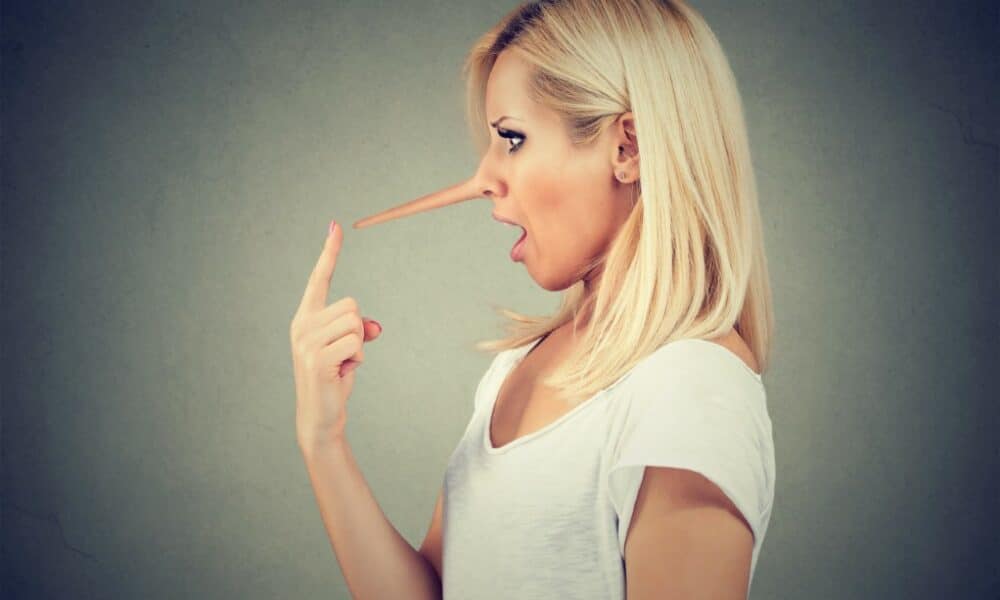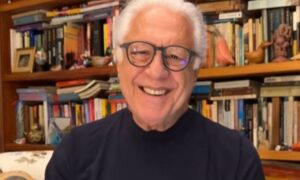Across many countries, April 1 is a day filled with pranks, hoaxes, and even fake news splashed across newspapers, magazines, radios, and TVs. Known as April Fools’ Day in English-speaking nations and Dia da Mentira in Brazil, this date carries a centuries-old tradition blending humor, confusion, and creativity. Its roots, though not entirely certain, trace back to 16th-century Europe, particularly France, where a calendar shift likely sparked the first wave of mockery. From there, the custom spread worldwide, taking on unique flavors in each culture and evolving over time, reaching the digital age where pranks now go viral in an instant.
The most widely accepted story points to 1564, when King Charles IX of France decreed the adoption of the Gregorian calendar, replacing the Julian one. Previously, the New Year was celebrated between late March and early April, tied to the spring equinox in the northern hemisphere. With the change, January 1 became the official start of the year, but not everyone adjusted quickly. Those who clung to the old dates near April 1 were mocked as “April fools” or “poissons d’avril” (April fish), a nod to young, easily caught fish symbolizing gullibility. This playful ridicule laid the groundwork for what would become a global phenomenon.
In Brazil, the tradition arrived via Portuguese influence, which itself borrowed from the French. A notable moment came on April 1, 1828, when a Minas Gerais newspaper called “A Mentira” published a fabricated story about the death of Emperor Dom Pedro I. The satirical edition fooled many readers, cementing April Fools’ Day as a time for hoaxes in the country. Today, the practice extends beyond personal pranks to include elaborate stunts by companies and media outlets, often catching the public off guard before the truth comes out.
Historical roots of April Fools’ Day
Digging into the origins of April Fools’ Day takes us back to medieval and Renaissance Europe. Beyond the French calendar theory, some historians link the date to older festivities like the Roman Hilaria, held in late March. During this event, people donned disguises and poked fun at each other in a spirit of joy and chaos. The timing near the spring equinox strengthens the idea that April 1 might stem from seasonal rituals celebrating the shift from winter to spring, often marked by nature’s own tricks, like sudden weather changes.
Over time, the custom solidified in France and spread across Europe. In England, April Fools’ Day began appearing more prominently by the 18th century. One of the earliest clear references comes from 1686, when writer John Aubrey noted April 1 as “Fooles Holy Day,” suggesting the habit was already widespread. In Scotland, the tradition stretched over two days: the first, dubbed “Hunt the Gowk” (hunting the cuckoo, a symbol of the fool), involved sending people on pointless errands, while the second, “Tailie Day,” focused on pranks like pinning fake tails on victims’ backs.
Pranks that made history
April Fools’ Day isn’t just about small-scale tricks; it has inspired hoaxes that became legendary. One standout occurred in 1957, when the BBC, a respected British broadcaster, aired a fake documentary about spaghetti harvesting in Switzerland. The footage showed farmers picking strands of pasta from trees, prompting viewers to call in asking how to grow their own “spaghetti trees.” Broadcast on April 1, the prank became a television classic, highlighting the media’s power to fool audiences with a straight face.
Another iconic case hit the United States in 1996, when Taco Bell claimed it had purchased Philadelphia’s Liberty Bell and would rename it the “Taco Liberty Bell.” The announcement sparked outrage until the company admitted the ruse later that day. In Brazil, fake news has also left its mark. In 2023, a news portal reported that the government planned to replace the real with a cryptocurrency-based currency, stirring confusion until the joke was revealed. These tales show how April 1 became a sandbox for imagination and lighthearted deception.
How the world marks April 1
Celebrations of April Fools’ Day differ globally, reflecting cultural quirks. In France, the “poisson d’avril” tradition lives on, with kids sticking paper fish on classmates’ backs and shouting the phrase when caught. Italy follows a similar custom, yelling “Pesce d’aprile!” In India, the Holi festival in late March shares some parallels, with playful antics involving colors and water, though it’s tied more to spring and Hindu mythology. Each region tweaks the day’s essence to fit its own identity, yet the core remains: to laugh and make others laugh.
In the United Kingdom, pranks must wrap up by noon, or the prankster becomes the “April Fool.” In Greece, pulling off a successful hoax on April 1 is believed to bring the trickster good luck for a year. Meanwhile, in Portugal and Brazil, the day often blends with a storytelling culture of exaggerated tales, like “fisherman’s lies,” which take center stage. The global reach of this practice underscores how humor crosses borders, uniting people through a centuries-old ritual.

Classic pranks around the world
Some April Fools’ pranks have earned fame for their ingenuity and impact. Here are a few that stand out:
- In 1698, Londoners were lured to the Tower of London to watch the “washing of the lions,” only to find it was a hoax.
- In 1965, the BBC unveiled “Smellovision,” a fake tech to send smells through TV, fooling viewers who claimed to catch whiffs.
- In 2015, Google rolled out “Google Maps Pac-Man,” letting users play the arcade game on real maps, a prank that went viral.
Digital age boosts the hoaxes
The internet and social media have turned April Fools’ Day into a worldwide spectacle. Tech giants like Google lead the charge with annual gags. In 2007, they introduced “Google TiSP,” a fictitious broadband service delivered through plumbing, complete with a mock installation kit. In 2019, Netflix dropped a fake trailer for a “Chicken Sushi” documentary, baffling subscribers before owning up to the jest. These moves highlight how the day has adapted to a connected world, reaching millions in moments.
Platforms like X also jump in, with users posting creative fakes. On April 1, 2024, a profile claimed scientists found a “living dinosaur” in the Amazon, sparking buzz until debunked. The digital speed makes April Fools’ Day trickier, as sorting fact from fiction grows harder. Traditional media, like newspapers and TV, still play along, but now compete with the spontaneous wit of social media, where anyone can craft a prank.
Brazilian twist on the tradition
In Brazil, April Fools’ Day has its own flair, shaped by Portuguese roots and a national knack for humor. Beyond the 1828 “A Mentira” newspaper stunt, other pranks have left a mark. In 1980, a Rio radio station announced the Pão de Açúcar hill would be painted pink for a special event, fooling listeners who stared at it all morning. More recently, in 2022, a TV channel claimed the Christ the Redeemer statue would get a permanent Santa hat, spawning memes before the truth surfaced.
Brazilians embrace the day with a laid-back vibe, often using it to poke fun at daily life. Companies join in too: in 2023, a soda brand teased a “calabresa pizza” flavor, while another pitched a “pet elevator” for buildings. These lighthearted stunts mirror the country’s playful spirit, making April 1 a perfect fit for a nation that loves a good laugh.
Timeline of April Fools’ Day
The day’s evolution can be tracked through key moments across centuries:
- 1564: France’s calendar switch sparks the first “poissons d’avril” pranks.
- 1686: John Aubrey documents “Fooles Holy Day” in England.
- 1828: Brazil’s “A Mentira” newspaper fakes Dom Pedro I’s death.
- 1957: BBC airs the spaghetti harvest hoax in Switzerland.
Cultural impact of April 1
Observed in dozens of countries, April Fools’ Day transcends cultural and geographic lines, serving as an annual nod to the value of humor. In France, kids still roam with paper fish, while in the U.S., brands like Burger King have rolled out fake products, like the 1998 “Left-Handed Whopper.” The day also prompts thoughts on human gullibility, especially in an era of digital misinformation, where spotting a prank versus a serious fake is no easy task.
Its staying power is striking. Centuries after its likely start, April 1 thrives, adapting to tech and social shifts. Whether through a friend’s trick or a multimillion-dollar marketing gag, the day’s essence endures: fooling for fun, always with a grin at the end. In Brazil, where humor runs deep, April Fools’ Day finds a welcoming home, blending local flair with global influences in a celebration that shows no signs of fading.

Across many countries, April 1 is a day filled with pranks, hoaxes, and even fake news splashed across newspapers, magazines, radios, and TVs. Known as April Fools’ Day in English-speaking nations and Dia da Mentira in Brazil, this date carries a centuries-old tradition blending humor, confusion, and creativity. Its roots, though not entirely certain, trace back to 16th-century Europe, particularly France, where a calendar shift likely sparked the first wave of mockery. From there, the custom spread worldwide, taking on unique flavors in each culture and evolving over time, reaching the digital age where pranks now go viral in an instant.
The most widely accepted story points to 1564, when King Charles IX of France decreed the adoption of the Gregorian calendar, replacing the Julian one. Previously, the New Year was celebrated between late March and early April, tied to the spring equinox in the northern hemisphere. With the change, January 1 became the official start of the year, but not everyone adjusted quickly. Those who clung to the old dates near April 1 were mocked as “April fools” or “poissons d’avril” (April fish), a nod to young, easily caught fish symbolizing gullibility. This playful ridicule laid the groundwork for what would become a global phenomenon.
In Brazil, the tradition arrived via Portuguese influence, which itself borrowed from the French. A notable moment came on April 1, 1828, when a Minas Gerais newspaper called “A Mentira” published a fabricated story about the death of Emperor Dom Pedro I. The satirical edition fooled many readers, cementing April Fools’ Day as a time for hoaxes in the country. Today, the practice extends beyond personal pranks to include elaborate stunts by companies and media outlets, often catching the public off guard before the truth comes out.
Historical roots of April Fools’ Day
Digging into the origins of April Fools’ Day takes us back to medieval and Renaissance Europe. Beyond the French calendar theory, some historians link the date to older festivities like the Roman Hilaria, held in late March. During this event, people donned disguises and poked fun at each other in a spirit of joy and chaos. The timing near the spring equinox strengthens the idea that April 1 might stem from seasonal rituals celebrating the shift from winter to spring, often marked by nature’s own tricks, like sudden weather changes.
Over time, the custom solidified in France and spread across Europe. In England, April Fools’ Day began appearing more prominently by the 18th century. One of the earliest clear references comes from 1686, when writer John Aubrey noted April 1 as “Fooles Holy Day,” suggesting the habit was already widespread. In Scotland, the tradition stretched over two days: the first, dubbed “Hunt the Gowk” (hunting the cuckoo, a symbol of the fool), involved sending people on pointless errands, while the second, “Tailie Day,” focused on pranks like pinning fake tails on victims’ backs.
Pranks that made history
April Fools’ Day isn’t just about small-scale tricks; it has inspired hoaxes that became legendary. One standout occurred in 1957, when the BBC, a respected British broadcaster, aired a fake documentary about spaghetti harvesting in Switzerland. The footage showed farmers picking strands of pasta from trees, prompting viewers to call in asking how to grow their own “spaghetti trees.” Broadcast on April 1, the prank became a television classic, highlighting the media’s power to fool audiences with a straight face.
Another iconic case hit the United States in 1996, when Taco Bell claimed it had purchased Philadelphia’s Liberty Bell and would rename it the “Taco Liberty Bell.” The announcement sparked outrage until the company admitted the ruse later that day. In Brazil, fake news has also left its mark. In 2023, a news portal reported that the government planned to replace the real with a cryptocurrency-based currency, stirring confusion until the joke was revealed. These tales show how April 1 became a sandbox for imagination and lighthearted deception.
How the world marks April 1
Celebrations of April Fools’ Day differ globally, reflecting cultural quirks. In France, the “poisson d’avril” tradition lives on, with kids sticking paper fish on classmates’ backs and shouting the phrase when caught. Italy follows a similar custom, yelling “Pesce d’aprile!” In India, the Holi festival in late March shares some parallels, with playful antics involving colors and water, though it’s tied more to spring and Hindu mythology. Each region tweaks the day’s essence to fit its own identity, yet the core remains: to laugh and make others laugh.
In the United Kingdom, pranks must wrap up by noon, or the prankster becomes the “April Fool.” In Greece, pulling off a successful hoax on April 1 is believed to bring the trickster good luck for a year. Meanwhile, in Portugal and Brazil, the day often blends with a storytelling culture of exaggerated tales, like “fisherman’s lies,” which take center stage. The global reach of this practice underscores how humor crosses borders, uniting people through a centuries-old ritual.

Classic pranks around the world
Some April Fools’ pranks have earned fame for their ingenuity and impact. Here are a few that stand out:
- In 1698, Londoners were lured to the Tower of London to watch the “washing of the lions,” only to find it was a hoax.
- In 1965, the BBC unveiled “Smellovision,” a fake tech to send smells through TV, fooling viewers who claimed to catch whiffs.
- In 2015, Google rolled out “Google Maps Pac-Man,” letting users play the arcade game on real maps, a prank that went viral.
Digital age boosts the hoaxes
The internet and social media have turned April Fools’ Day into a worldwide spectacle. Tech giants like Google lead the charge with annual gags. In 2007, they introduced “Google TiSP,” a fictitious broadband service delivered through plumbing, complete with a mock installation kit. In 2019, Netflix dropped a fake trailer for a “Chicken Sushi” documentary, baffling subscribers before owning up to the jest. These moves highlight how the day has adapted to a connected world, reaching millions in moments.
Platforms like X also jump in, with users posting creative fakes. On April 1, 2024, a profile claimed scientists found a “living dinosaur” in the Amazon, sparking buzz until debunked. The digital speed makes April Fools’ Day trickier, as sorting fact from fiction grows harder. Traditional media, like newspapers and TV, still play along, but now compete with the spontaneous wit of social media, where anyone can craft a prank.
Brazilian twist on the tradition
In Brazil, April Fools’ Day has its own flair, shaped by Portuguese roots and a national knack for humor. Beyond the 1828 “A Mentira” newspaper stunt, other pranks have left a mark. In 1980, a Rio radio station announced the Pão de Açúcar hill would be painted pink for a special event, fooling listeners who stared at it all morning. More recently, in 2022, a TV channel claimed the Christ the Redeemer statue would get a permanent Santa hat, spawning memes before the truth surfaced.
Brazilians embrace the day with a laid-back vibe, often using it to poke fun at daily life. Companies join in too: in 2023, a soda brand teased a “calabresa pizza” flavor, while another pitched a “pet elevator” for buildings. These lighthearted stunts mirror the country’s playful spirit, making April 1 a perfect fit for a nation that loves a good laugh.
Timeline of April Fools’ Day
The day’s evolution can be tracked through key moments across centuries:
- 1564: France’s calendar switch sparks the first “poissons d’avril” pranks.
- 1686: John Aubrey documents “Fooles Holy Day” in England.
- 1828: Brazil’s “A Mentira” newspaper fakes Dom Pedro I’s death.
- 1957: BBC airs the spaghetti harvest hoax in Switzerland.
Cultural impact of April 1
Observed in dozens of countries, April Fools’ Day transcends cultural and geographic lines, serving as an annual nod to the value of humor. In France, kids still roam with paper fish, while in the U.S., brands like Burger King have rolled out fake products, like the 1998 “Left-Handed Whopper.” The day also prompts thoughts on human gullibility, especially in an era of digital misinformation, where spotting a prank versus a serious fake is no easy task.
Its staying power is striking. Centuries after its likely start, April 1 thrives, adapting to tech and social shifts. Whether through a friend’s trick or a multimillion-dollar marketing gag, the day’s essence endures: fooling for fun, always with a grin at the end. In Brazil, where humor runs deep, April Fools’ Day finds a welcoming home, blending local flair with global influences in a celebration that shows no signs of fading.







